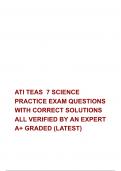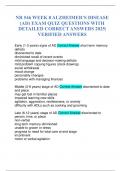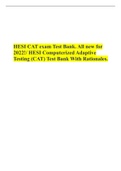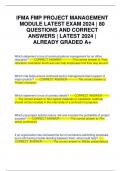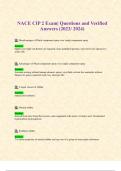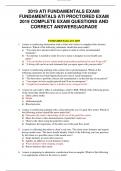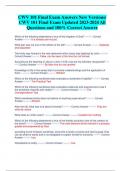Exam (elaborations)
ATI TEAS 7 SCIENCE PRACTICE EXAM QUESTIONS WITH CORRECT SOLUTIONS ALL VERIFIED BY AN EXPERT A+ GRADED (LATEST)
- Course
- Science TEAS 7
- Institution
- University Of Florida College Of Medicine
ATI TEAS 7 SCIENCE PRACTICE EXAM QUESTIONS WITH CORRECT SOLUTIONS ALL VERIFIED BY AN EXPERT A+ GRADED (LATEST)
[Show more]
